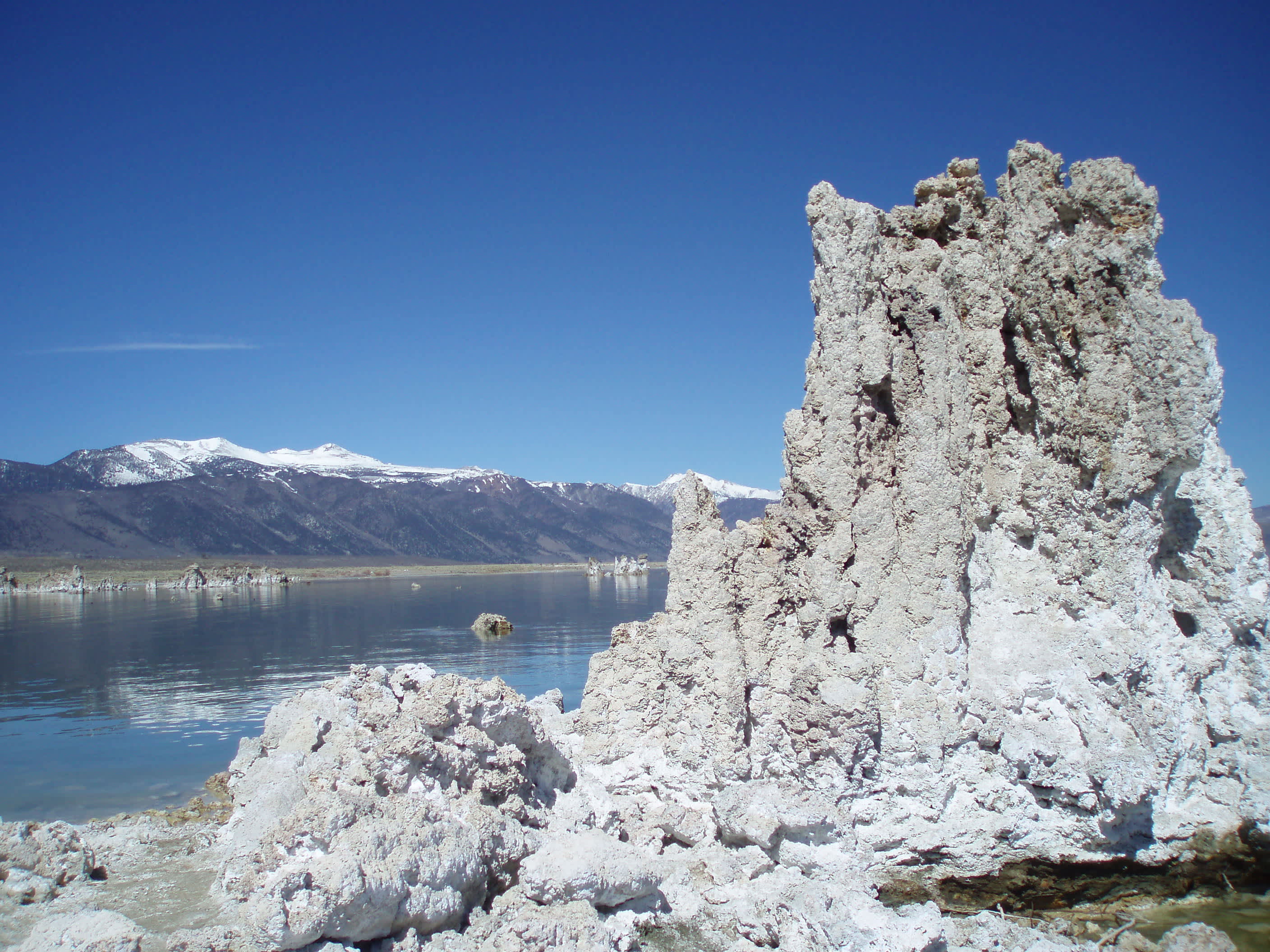Tufa Towers at California’s Mono Lake
Marty Basch 04.25.13

If you don’t know tufa from tofu, head to Mono Lake.
Coral-looking like tufa towers and groves line the inland lake some two-and-a-half times as salty as the Pacific.
Not only a natural resource northeast of Yosemite National Park, Mono (rhymes with U2’s Bono; “Mono is the disease,” locals say), the large nine-by-13-mile lake is also symbolic of California’s water struggles.
A modern day success story, the lake was once in danger of being depleted when the sources feeding it were diverted to the Los Angeles area in 1941. Over time, the lake lost about half its volume, doubled in salinity, and dropped more than 40 feet before it was saved in 1994 during an effort by the Mono Lake Committee.
The lake evaporates but is fed by a number of creeks. The saltiness largely comes from the volcanic ash in the area.
Though still shy of the targeted level of 6,392 feet, the lake is filling up and visitors come walk its shoreline trails, paddle by its two islands, swim (and float) in season, take photos (sunrise and sunset are best), marvel at the tofu, and watch the wildlife.
Both stark and beautiful, the lake’s in a fine neighborhood with the Bodie Hills in the north, striking Mono Craters in the south, and Anchorite Hills to the east.
There are a handful of access points on the western and southern shore of the lake with access off U.S. 395. The Mono Lake Committee Information Center in Lee Vining is a place to check in for an in-depth look at the lake’s history through the movie The Story of Mono Lake while walking the trails of the South Tufa area is a fine way to get up close and personal with the lake.

The easy walk along the high desert rabbit and sage brush leads to the shores where California gulls migrate each spring to nest and raise their young, while shorebirds tend to just pass by and stop for a rest during their journey to South America in the winter.
Though the birds weren’t in evidence, the shore was teeming with tiny swarming flies. Like dark moving clouds, the alkali flies that live by the lake move away in unison as feet tread upon their territory.While in the water, trillions of pixy-like brine shrimp mill about munching on the algae clinging to rocks. Mono Lake fans of a certain age might remember the sea monkeys for sale from childhood comics. That’s brine shrimp. They’re also used for aquarium fish food as well as food for local trout farms.
Paddlers can make their way by the somber-colored volcanic cinder cone of Negit Island and white Paoha Island, named for the spring vents it contains.
But it is the tufa—Latin for porous rock— that’s an incredible attraction. In essence they are growing fossils, the result of a chemical reaction from the meeting of the calcium found in the freshwater that feeds the lake and carbonate in its salty water. Put them together and you get a solid with spires, knobs, and crevices. Touch, okay. Take, no way. It’s protected.
Naturalist tours often include a look at the chemical soup, with a guide taking a beaker and mixing together the waters for an instantaneous reaction that initially looks foamy before taking shape to provide an otherworldly feel to a storied Golden State lake.

